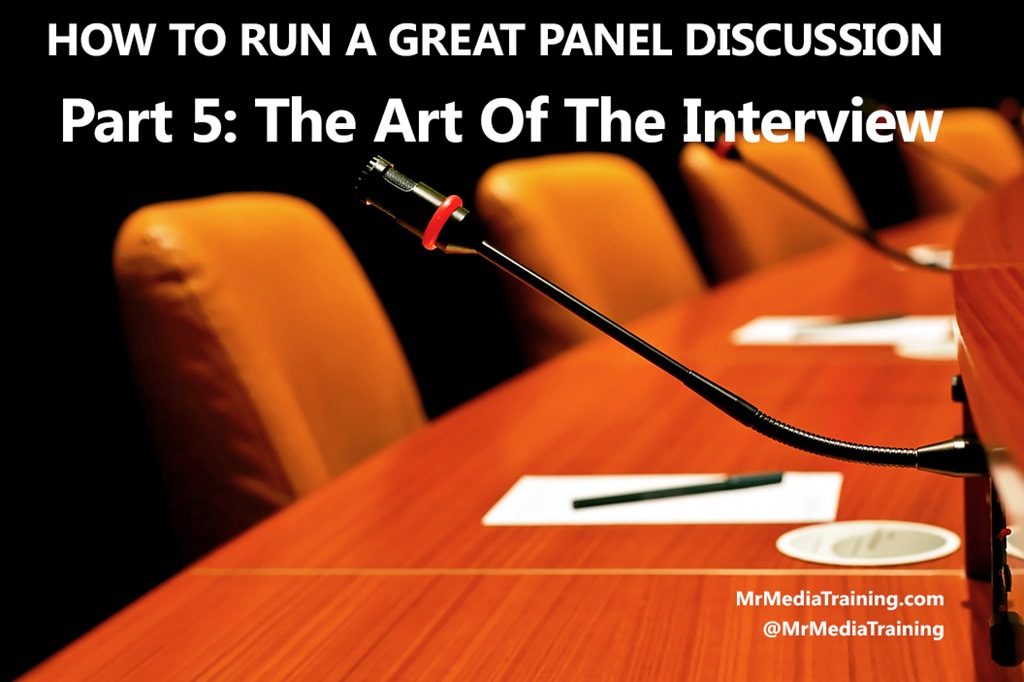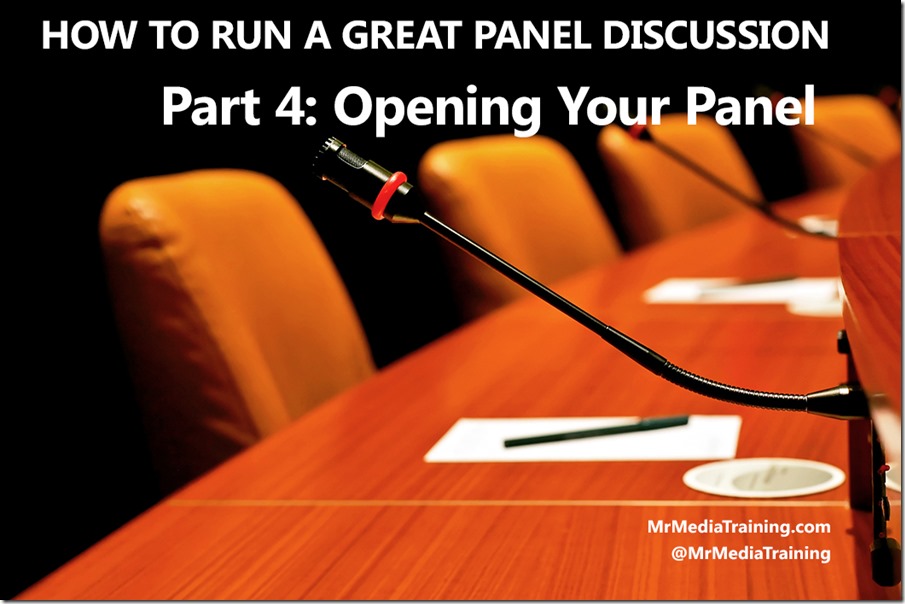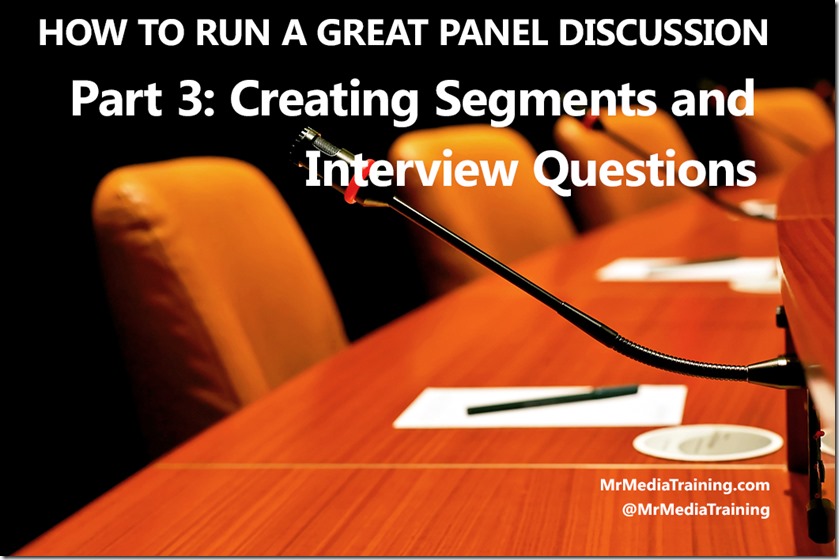Great Panel Discussions: Nine Ways To Be A Terrific Panelist
This is the final post of a six-part series that teaches you how to plan and deliver outstanding panel presentations. Click here to see all six parts.
The last five posts in this series focused primarily on moderators — but panelists also carry the burden of listening carefully to what their co-panelists are saying in order to form relevant responses, interjecting as appropriate to make sure their views get heard, and packing a lot of value into a shorter-than-usual amount of speaking time.
Most of the presenting best practices found elsewhere on this blog also apply to panelists; in addition, these nine considerations will help you stand apart from your fellow panelists.
1. Know your audience-focused bright shiny object.
Prepare for your panel just as you would any other presentation. Establish clarity on your ABSO, and come prepared with compelling support points. Leadership author Kristi Hedges advises clients to “practice your speaking part like a keynote,” and encourages them to “think through a compelling opening and closing statement, prepare stories to share, [and] bring pithy anecdotes to spark discussion.”
2. Bring it back.
If the moderator or another panelist says something off-topic, quickly evaluate whether it’s worth your time to respond to it. Too often, panelists spend time on topics of secondary importance simply because they came up — not because they’re of high significance. If your precious talk-time isn’t best spent on those topics, acknowledge them quickly, if necessary, and transition back to your key points with lines such as “But the broader point is …” or “What we regard as far more important is …”
3. Place your headline at the top of each answer.
Many of the techniques I detail in my book The Media Training Bible also apply to panel presentations, perhaps none more so than reversing the usual communications formula. We typically speak in chronological order — beginning, middle, and end — but for panels, like media interviews, you should flip the formula. Start at the end — which is where your punchline usually lives — and then go back and offer additional context (typically found in the beginning and middle) as time allows. That way, if the moderator or a panelist interjects before you’ve concluded your thought, you’ve already gotten your most important point across.
One great exercise is to write out a list of possible questions, then practice answering each of them using only one sentence. Doing so will force your headline to the top.
4. Avoid filibusters.
Don’t be that nightmarish panelist who dominates talk-time at the expense of other panelists; audiences often resent such overbearing displays. The true measure of great panelists isn’t how much of the clock they got to use, but rather how they took advantage of every turn to speak.
5. Expand, don’t repeat.
Marketing specialist Guy Kawasaki advises panelists to “Never say, ‘I agree with (name of previous panelist).’” His point is that panelists who all say the same thing are redundant, bore the audience, and call into question why the panel didn’t have a greater diversity of views. Of course, there will be times when you agree with the moderator or fellow panelists; in those cases, it’s best to expand upon their remarks than simply agree with them. Phrases like these will help you add to and expand the conversation:
- “I agree with that, but there’s one additional strategy that has been vital for my firm.”
- “Here’s what I’d add to what Marco just said.”
- “I did the same thing, but for different reasons.”
- “There’s another angle through which I’d encourage you to look at this.”
- “As an engineer, I have a different view of this topic.”
6. Don’t wait for an invitation.
For most panels, it’s appropriate to jump in if you disagree with or want to add something to what another panelist just said. Let the person speaking conclude their thought first, as audiences can turn on chronic interrupters. Here are a few useful phrases:
- “May I add something here?”
- “I’d like to respond to something Paula just said.”
- “Our experience has been the opposite of that, so I’d like to offer a contrasting view.”
- “Another perspective on that point might be useful here.”
- “I disagree with that, because …”
7. Look at the audience.
Panelists typically look only at the moderator (or other panelists) when answering questions and virtually ignore the other people in the room. Instead of viewing the audience as a passive body looking in on somebody else’s discussion, look for opportunities to direct your answers to them. As examples, you can direct your answers to the audience when:
Offering consumer tips
Discussing how your topic is relevant to their lives
Giving a call to action
Sharing a moving anecdote
When listening to other panelists, however, it’s best to direct your eye contact toward them.
8. Sit in an end seat.
As you read previously, moderators generally sit in an end seat in order to see the entire panel in one eye sweep. Snagging the opposite end seat, if possible, will give you the same advantage.
9. Pay attention to your listening body language.
The audience can see you when you’re not speaking — so unless you want to be seen as contrary, avoid looking distracted, letting your eyes wander around the room, or shaking your head when others are speaking.
Did you miss the first five parts of our series about better panel discussions? Click here to read them all!



